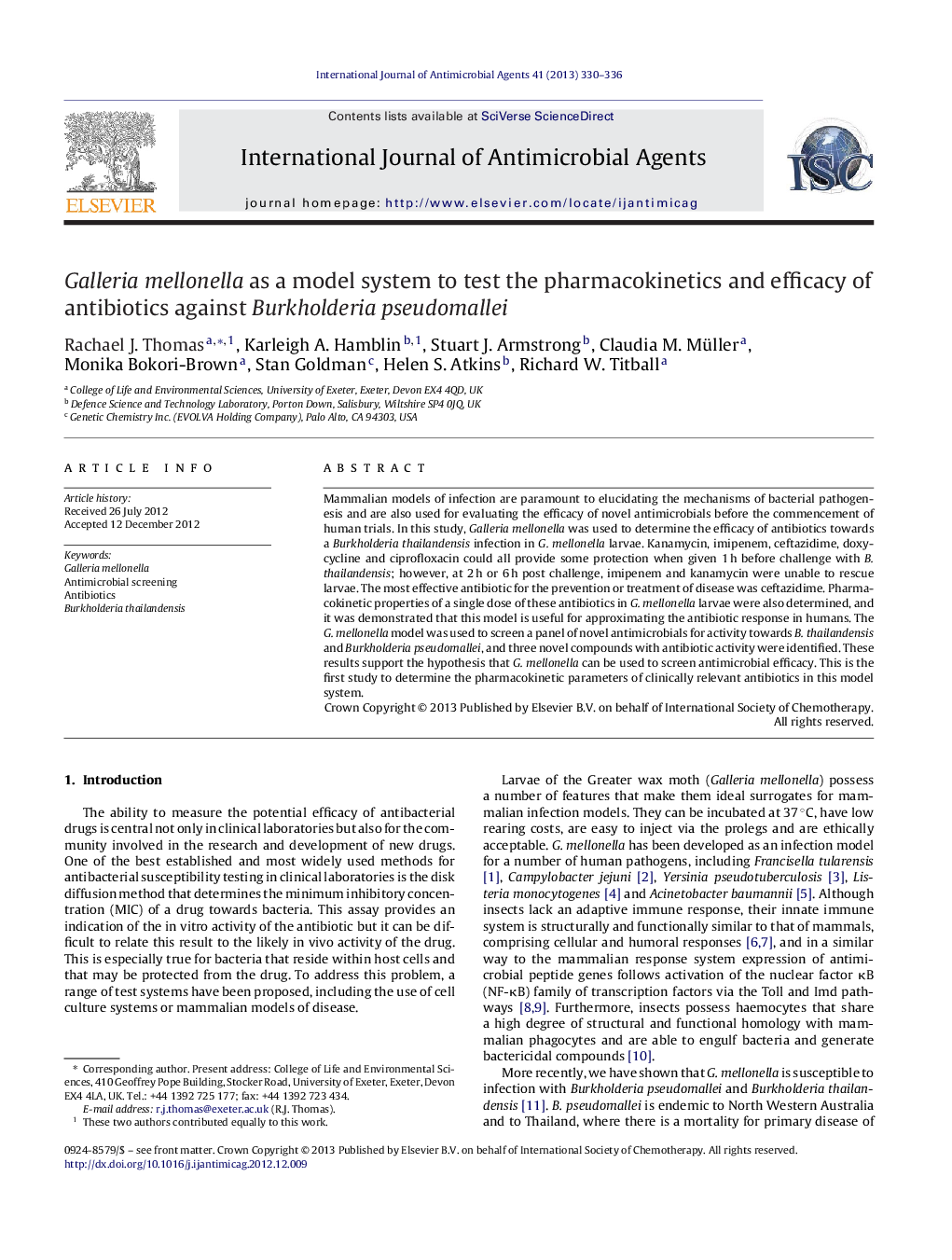| Article ID | Journal | Published Year | Pages | File Type |
|---|---|---|---|---|
| 3359213 | International Journal of Antimicrobial Agents | 2013 | 7 Pages |
Mammalian models of infection are paramount to elucidating the mechanisms of bacterial pathogenesis and are also used for evaluating the efficacy of novel antimicrobials before the commencement of human trials. In this study, Galleria mellonella was used to determine the efficacy of antibiotics towards a Burkholderia thailandensis infection in G. mellonella larvae. Kanamycin, imipenem, ceftazidime, doxycycline and ciprofloxacin could all provide some protection when given 1 h before challenge with B. thailandensis; however, at 2 h or 6 h post challenge, imipenem and kanamycin were unable to rescue larvae. The most effective antibiotic for the prevention or treatment of disease was ceftazidime. Pharmacokinetic properties of a single dose of these antibiotics in G. mellonella larvae were also determined, and it was demonstrated that this model is useful for approximating the antibiotic response in humans. The G. mellonella model was used to screen a panel of novel antimicrobials for activity towards B. thailandensis and Burkholderia pseudomallei, and three novel compounds with antibiotic activity were identified. These results support the hypothesis that G. mellonella can be used to screen antimicrobial efficacy. This is the first study to determine the pharmacokinetic parameters of clinically relevant antibiotics in this model system.
